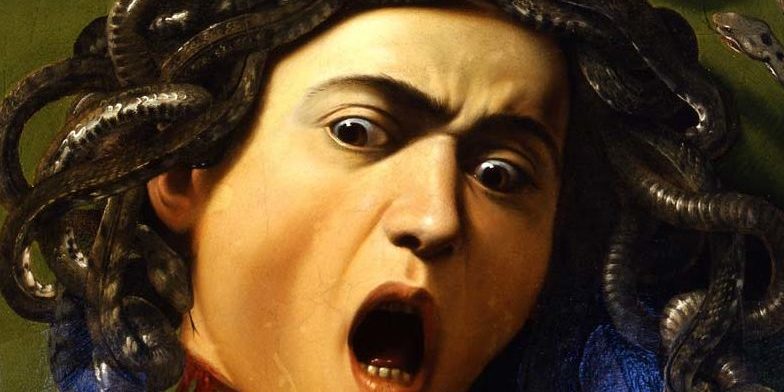The appearance of
reality that the artist poses and resolves on the plastic space, that of the
canvas, resembles reality and has often taken his models from it. For many
years, the desire for perfection or compliance with the norm or simply the need
to transcend the reality of the reality of human nature by elevating it to a
superior, symbolic, spiritual idea and therefore, clearly removed from what is
natural, has given works of high plastic value, Departing from this condition
like many other conventions of human behavior, Caravaggio applied to his
pictorial work and his life a systematic and deep, while passionate spirit of
rebellion.
Perhaps the painting
lacked to find the atmosphere in which life moves, the real space, where the
light highlights the shapes of things, where matter is opaque and casts
shadows; where movement and expression constantly remember the existence of
human life; Accepting this obvious contradiction between the real world and the
normative one, the painting, trying to solve, was, according to his works, the
intention of Caravaggio.
The real space is,
by nature, limited expands and exists as far as the eye can see and changes
with displacement; the space where it is painted is limited and by the
painter's decision, selective.
Caravaggio
established the treatment of his space beyond the subjects that he had to
present and gave the light the possibility of configuring it: in fact, the
direction, the expressive force and the control of the light can only be
decided by the author, who find in This is one of his memories and is at the
same time one of his abilities. Undoubtedly, Caravaggio was aware of the artificial
light of his paintings, that the painted light and its effects and reflections
had to be decided beforehand and opted for a sharp contrast between the shapes
and the backgrounds so that more than the absence of light, there is Darkness
as a starting point.
The option to give
prominence to the light was, in its time a real revolution, it almost seems
that in the beginning of his thought, in the first mental embozo, we know that
not towards previous studies of his works, the darkness is already established
in a way that the figures emerge from the dark background and the light decides
their place and the role they play in the presentation of the chosen theme.
The light shows the
color and the real aspect of things, does not hide or camouflage the reality
that was observed with attention by the painter and that can give us another
clue to his pictorial ideology, the will to show it as it is. In accordance
with and consistent with this evidence, Caravaggio exercised his skill in
precision and rigor.
The maturity of the
fruits that I paint is evident, the objects are identified with such clarity:
the delicacies, the glass jars full of water or wine, the shabby clothes, the
perfectly written scores, the musical instruments, the furniture, etc. . All this
is a sample of the objects of his time, of what belonged to his immediate
surroundings.
Then a question of
difficult answer arises, why did you choose to show ordinary, simple objects?
Why did you choose your models among friends and neighbors? Was it an act of
coherence, of logic, of proximity of identification with that more real or
immediate, or perhaps an act of provocation? In any case, it is part of
artistic freedom.
Freedom was evident
and necessary in the conception of its own pictorial space, to build not only
the spatial depth and the place of representation, but especially the intensity
of the moments represented through the light, even redirecting the theme that requested
its representation in a natural space, towards dark and depopulated
environments of objects, dominated by the construction that he entrusts to the
light and the nuances that he generates when he gives corporeality to the
bodies through color.








